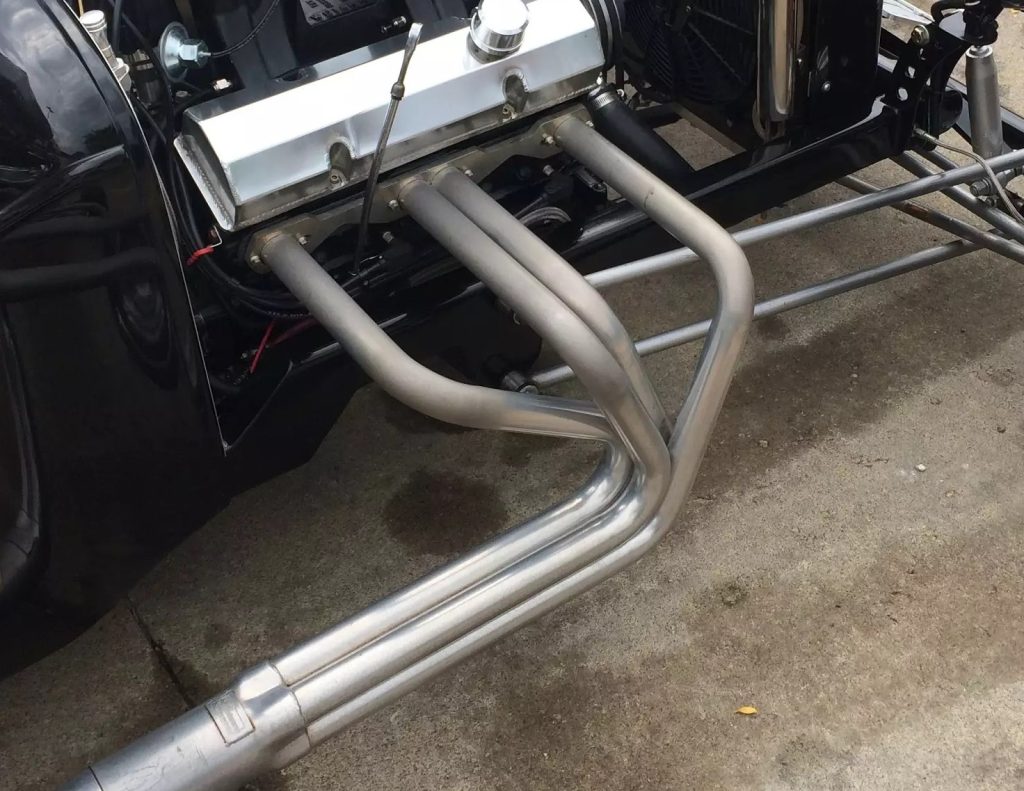Selecting the optimal headers and exhaust system for your ride involves tube diameter, length, collector diameter, collector length, pipe diameter, and more. The goal is to have a system that produces maximum efficiency at a sound level acceptable for your application.
And to produce maximum power, the exhaust scavenging effect is key.
What is Exhaust Scavenging & How Does it Work?
Scavenging occurs when the rush of exhaust gas leaving the cylinder helps to pull in a fresh air/fuel mixture.
During the exhaust stroke, the exhaust gases escape the cylinder very quickly. This creates a high-speed pulse moving down the header tube. The low pressure behind the exhaust pulse creates a vacuum effect.
During valve overlap (the period when both the intake and exhaust valves are open simultaneously, expressed in degrees of crankshaft rotation), the vacuum pulls out burnt exhaust gases. It also helps to pull in more fresh air on the intake side—the more valve overlap you have, the more critical scavenging becomes.
As rpm increases, the air flows faster and the scavenging effect becomes more powerful.
How Exhaust Scavenging Affects Performance
The cylinder is full of exhaust gases at the bottom of the power stroke. During the exhaust stroke, the piston pushes the exhaust out of the engine. Any backpressure or restriction in the exhaust system requires the piston to push harder, which is lost energy. The engine is more efficient when less energy is used to move air in and out of the cylinder. This results in more power and better fuel economy.
Scavenging also has a mini “supercharging” effect. This increase in volumetric efficiency improves cylinder filling, which means more torque and horsepower.
Yet, exhaust scavenging is a delicate process to control.
The intake system, cylinder heads, and exhaust system must be matched to optimize airflow. It also requires the right camshaft duration, lobe separation, and valve timing for the desired rpm range.


I’m having a 600 horsepower built 391 stroker put into my ride. The builder has matched it with long tube headers, crossover, 40 series flow master with 3” tubing and 2 3/4 tubing out rear. The 3” tubing has 4 90 degree angles forming around the crossover. Will this create to much back pressure?
Well that’s a very difficult question to answer mostly because of the boat load of variables involved. But what I can tell you is I have a 392 Genlll Hemi Challenger. I’m running 1 7/8” Long Tubes , Kooks 3” intermediate pipes with high flow cats, Jones 3” X pipe , Vibrant 3” x 18” resonators , Flowmaster 40 series 3”mufflers and Stainless Works 3” tips. I also have a very long list of other performance parts that may or may not impact the sound and or functionality of the car and this is why your individual system would be almost impossible to predict “actual” results. But mine works absolutely outstanding the way I set it up , truth be told I went through a few combinations of components until I achieved a result my somewhat analretentive meticulous personality found acceptable. There are engineering best practices that many articles point out , but at the end of the day unless you find a vehicle just like yours with a completed system that you like and can replicate there will undoubtedly be some trial and error but frankly that’s the nature of high performance modification and I’ve been at it since I was a teenager, I am now 69 yrs young .